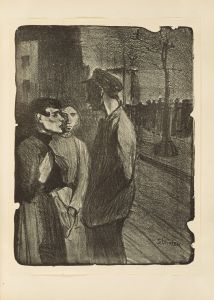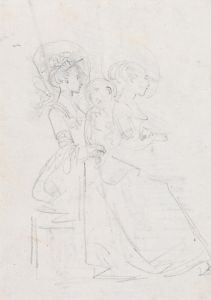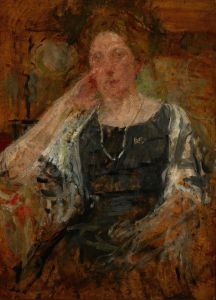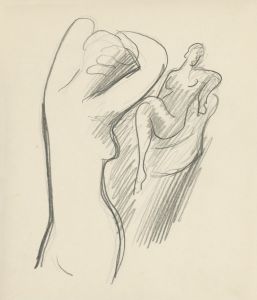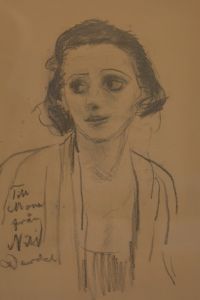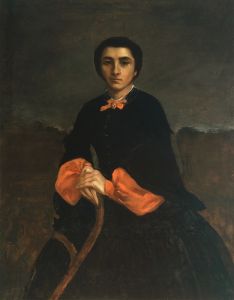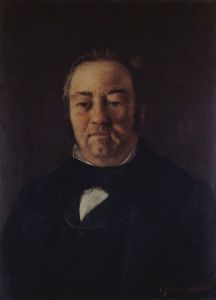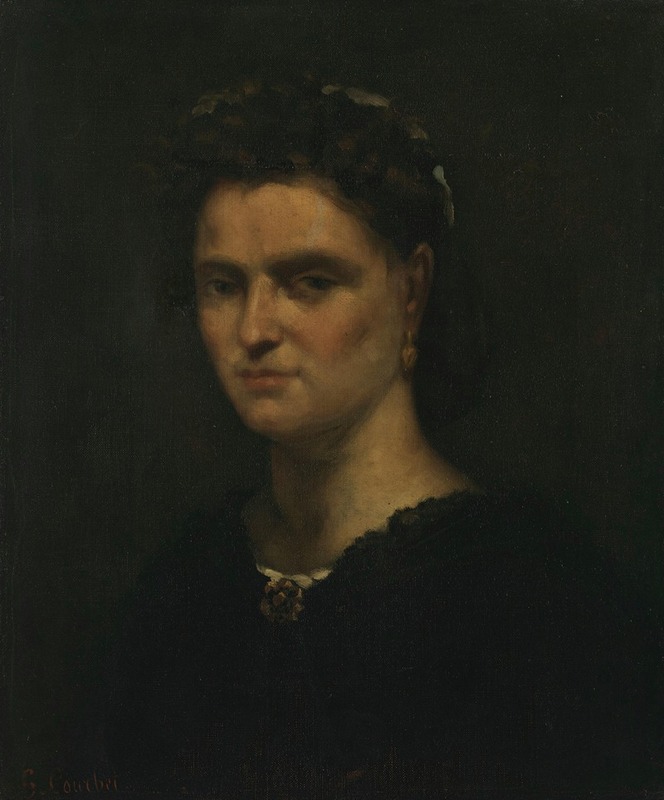
Bildnis einer Dame
A hand-painted replica of Gustave Courbet’s masterpiece Bildnis einer Dame, meticulously crafted by professional artists to capture the true essence of the original. Each piece is created with museum-quality canvas and rare mineral pigments, carefully painted by experienced artists with delicate brushstrokes and rich, layered colors to perfectly recreate the texture of the original artwork. Unlike machine-printed reproductions, this hand-painted version brings the painting to life, infused with the artist’s emotions and skill in every stroke. Whether for personal collection or home decoration, it instantly elevates the artistic atmosphere of any space.
Gustave Courbet, a prominent French painter known for his role in the Realism movement, created numerous works that captured the essence of 19th-century life with unflinching honesty. One of his lesser-known paintings is "Bildnis einer Dame," which translates to "Portrait of a Lady." This artwork exemplifies Courbet's commitment to realism and his skill in portraying human subjects with depth and character.
"Bildnis einer Dame" is a portrait that reflects Courbet's mastery in capturing the individuality and personality of his subjects. While specific details about the painting's creation, such as the exact date and the identity of the lady depicted, are not widely documented, the work is consistent with Courbet's style during the height of his career. Courbet's portraits often focused on ordinary people, presenting them with a sense of dignity and realism that was revolutionary for the time.
Courbet's approach to portraiture was characterized by his use of rich, earthy tones and a focus on the textures of skin and fabric, which can be observed in "Bildnis einer Dame." His technique involved applying paint with a palette knife, creating a textured surface that added depth to his compositions. This method allowed him to emphasize the physical presence of his subjects, making them appear almost tangible to the viewer.
The subject of "Bildnis einer Dame" is portrayed with a direct gaze, a common feature in Courbet's portraits that invites the viewer to engage with the sitter on a personal level. This approach was part of Courbet's broader artistic philosophy, which sought to depict reality without embellishment or idealization. By focusing on the unique features and expressions of his subjects, Courbet challenged the traditional conventions of portraiture that often aimed to flatter or idealize the sitter.
Courbet's work, including "Bildnis einer Dame," played a significant role in the development of modern art. His rejection of the romanticized and historical subjects favored by the academic art establishment paved the way for future movements that emphasized everyday life and ordinary people. Courbet's influence can be seen in the works of later artists who embraced realism and sought to depict the world as it is, rather than as it should be.
While "Bildnis einer Dame" may not be as widely recognized as some of Courbet's other works, such as "The Stone Breakers" or "A Burial at Ornans," it remains an important example of his portraiture and his dedication to realism. The painting reflects Courbet's belief in the power of art to convey truth and his commitment to portraying his subjects with honesty and respect.
In summary, "Bildnis einer Dame" by Gustave Courbet is a testament to the artist's skill in capturing the essence of his subjects through realistic portrayal. Although specific details about the painting are limited, it stands as an example of Courbet's influence on the art world and his role in shaping the course of modern art through his dedication to realism.





